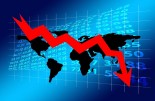Fidelity International: Optimism returns after 'liberation day'
Fidelity International: Optimism returns after 'liberation day'

Tom Stevenson, Investment Director at Fidelity International, comments on what’s driving investments this week.
Stock markets have been on a roller coaster ride so far this year. Initial optimism about tax cuts and deregulation morphed into a rotation out of the US on valuation and trade war fears. ‘Liberation Day’ compounded those tariff concerns and markets entered a technical bear market. Since then, optimism has reasserted itself as investors bet that the worst of the policy uncertainty is in the past, even if the real impact on the economy is yet to appear.
It’s served as a reminder that trying to time the markets during periods of uncertainty is a recipe for being behind the curve. In investment being even a little bit late can be as bad as being wrong. Far better to ride the wave and stay invested. The S&P 500 is below its February peak but closer to it than to the low point it reached in March. Catching the tops and bottoms of those swings would have been very difficult indeed.
Market turmoil and recovery
History shows that 20% corrections can lead to very different subsequent outcomes. Sometimes, it’s the pause that refreshes and the market goes on to higher highs again. 2018 and 1998 were good examples of this. At other times, it’s just the start of a deeper bear market - the early 1970s, the dot.com bust and the financial crisis spring to mind. There are other periods when the correction is a reset from which the market goes sideways for a while.
So, there’s no way of knowing whether the 76% rise in the market since the October 2022 low to the high point in February is the end of it or if the bull market is still alive and well. For now, the S&P 500 remains near its long-term trend line, suggesting staying invested is sensible for now.
Encouraging corporate earnings
The first quarter earnings season has turned out pretty well, with a big uptick in year-on-year growth expectations. That’s not true of future quarters, where expectations are being reined in. But, for now, companies are holding up. Last week, we had encouraging news on the job creation front too. And that helped the S&P to a ninth consecutive positive trading day. Here in the UK, we’ve had 15 gains on the trot, which has never been achieved before.
The other good news on the fundamentals front is that the lowered earnings expectations have already triggered a moderation in the valuation multiple on which the market trades. The 5-year cyclically adjusted price-earnings ratio has moved back below 30. The market is no longer obviously overvalued.
Interest rates and monetary policy
The other important influence on the market, monetary policy, looks supportive too. Inflation is easing back towards the Fed’s target. It looks as if central banks on both sides of the Atlantic have room to cut rates from their current level. We will get more on that this week as both the Fed and Bank of England will announce rates on Wednesday and Thursday respectively. The Fed is expected to defy calls from the President and to leave rates unchanged. But the Bank of England will probably cut by a quarter point to support the UK economy. Financial markets put a 100% probability on at least a quarter point cut; the more interesting question is whether falling business and consumer confidence might merit a bigger half point cut.
Falling oil prices
Oil prices remain under pressure due to weak demand and increased supply. Brent crude has dropped below $59 a barrel, nearing a four-year low, while US crude is trading even lower. Over the weekend, OPEC+ announced a second consecutive production increase, signalling a shift towards chasing market share rather than propping up prices. This oversupply has further contributed to the decline in oil prices.
Warren Buffet’s retirement
The other big announcement over the weekend was the retirement of Warren Buffett as chief executive of Berkshire Hathaway, the investment powerhouse he has presided over for sixty years. During that time, he has cemented his reputation as the greatest investor of all time, outperforming the S&P 500 index by a massive margin and becoming at times the world’s richest man in the process.
Buffett hands Berkshire Hathaway onto his chosen successor, Greg Abel, in good shape, with a compound annual growth rate that’s beaten the US benchmark comfortably over one, five, ten, 20 and 30 years. He has done that by beating the index by a few percentage points, not every year but almost every one, for six decades. That and the power of compounding has resulted in a massive outperformance over time.
For everyday investors, Buffet’s approach offers valuable lessons, such as the importance of long-term thinking and the strategic use of cash reserves during market downturns.








